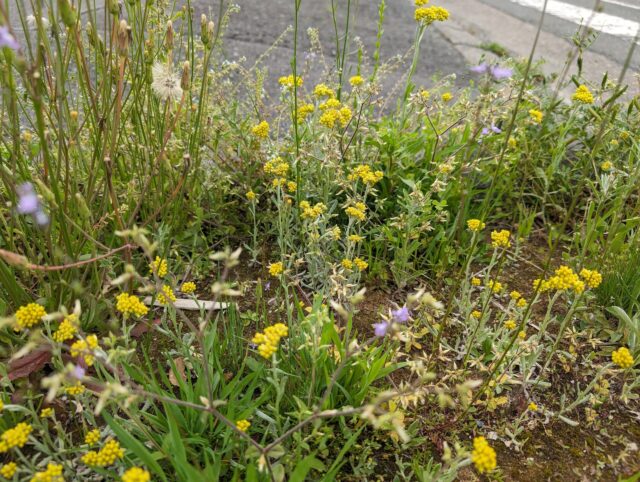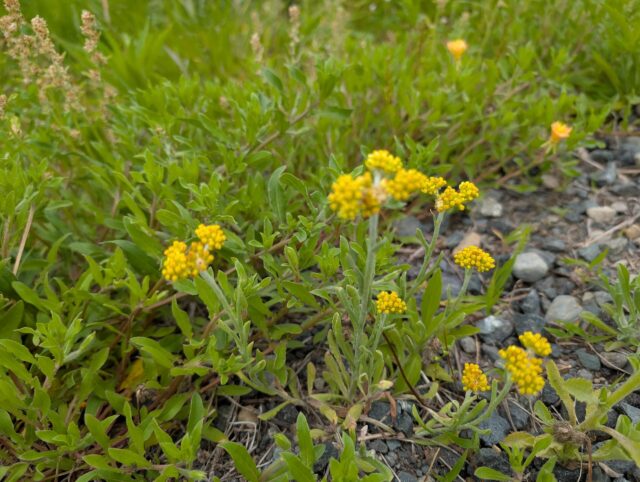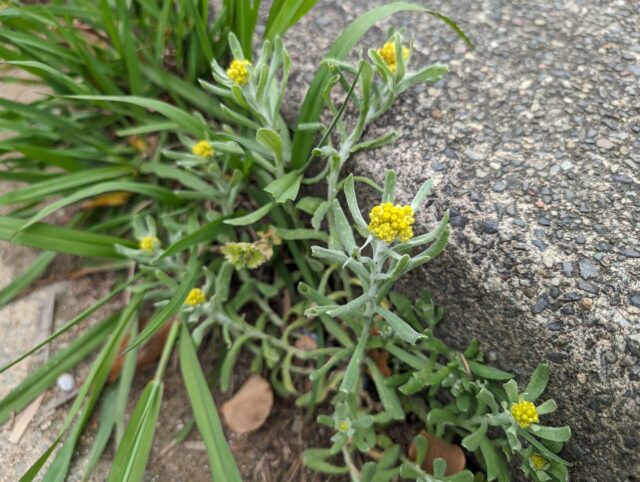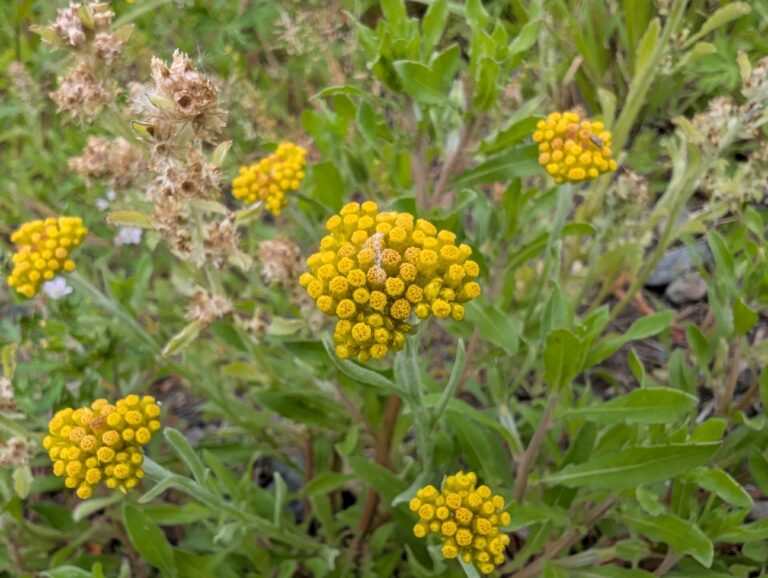Nestled among Japan’s rich botanical heritage lies a modest yet remarkable plant known as Hahakogusa (母子草) in Japanese, or Cudweed in English. This unassuming herb has been treasured in Japanese culture for centuries, not only as one of the traditional Spring Seven Herbs but also as a valuable medicinal plant. While often overlooked by modern Japanese society, recent scientific research has begun to validate what traditional knowledge has long maintained – that this little plant holds significant health benefits.
What is Cudweed (Hahakogusa)?

Cudweed (Pseudognaphalium affine, formerly Gnaphalium affine) is a biennial plant belonging to the Asteraceae family (the same family as sunflowers and daisies). Its most distinctive characteristic is the soft white woolly hair that covers its entire surface, giving the plant a whitish appearance.
Physical Characteristics:
- Height: 15-40 cm (6-16 inches)
- Flowering Period: April to June in Japan
- Appearance: Covered in soft white hairs, with small yellow flower heads
- Leaves: Spoon-shaped, 2-6 cm long
- Flowers: Small yellow clustered heads, about 3 mm in diameter
Cudweed is commonly found throughout East Asia, from Japan and Korea to China, India, and Malaysia. In Japan, it grows abundantly in fields, roadsides, and open areas across Hokkaido, Honshu, Shikoku, and Kyushu.
Cultural Significance in Japan
One of Japan’s Spring Seven Herbs
In Japanese culture, cudweed holds a special place as one of the “Spring Seven Herbs” (春の七草, haru no nanakusa). In this tradition, it is known as “Gogyō” (御形) or “Ogyō”. The Spring Seven Herbs are:
- Seri (水芹, Water dropwort)
- Nazuna (薺, Shepherd’s purse)
- Gogyō (御形, Cudweed) – our featured herb
- Hakobera (繁縷, Chickweed)
- Hotokenoza (仏の座, Nipplewort)
- Suzuna (菘, Turnip)
- Suzushiro (蘿蔔, Daikon radish)
These seven herbs are traditionally consumed in a rice porridge called “Nanakusa-gayu” (七草粥) on January 7th, known as “Jinjitsu no Sekku” (人日の節句) or the Festival of Seven Herbs. This custom is believed to bring good health and fortune for the coming year, while also helping the digestive system recover from the rich foods consumed during the New Year celebrations.
Traditional Uses in Japanese Culture
The name “Hahakogusa” (母子草) literally translates to “mother and child grass.” There are several theories about the origin of this name:
- One theory suggests it comes from the way the plant’s fluffy appearance resembles a mother cradling a child
- Another theory traces the name to “Houkogusa” (ほうこぐさ), referring to its fluffy or “houketa” (ほうけた) appearance, which later transformed into “Hahakogusa”
In traditional Japanese culture, cudweed was once used to make herbal rice cakes before it was replaced by mugwort (yomogi) during the Meiji era. The young leaves and shoots were considered a delicacy and are still occasionally used in traditional Japanese cuisine.
Medicinal Properties and Health Benefits

Traditional Medicine Uses
For centuries, cudweed has been valued in Japanese folk medicine for its numerous health benefits:
- Cough relief and expectorant effects – helping to clear phlegm and ease respiratory conditions
- Diuretic properties – beneficial for kidney problems and reducing swelling
- Treatment for colds, sore throats, and tonsillitis
- Anti-inflammatory effects – used for various inflammatory conditions
The medicinal parts used are typically the whole plant, harvested during the early flowering stage and then dried for use in teas, decoctions, or powders.
Modern Scientific Research
While traditional Japanese herbalists have long recognized cudweed’s benefits, modern science is now confirming many of these properties and discovering new ones. Recent research from 2017 and 2024 has revealed:
- Powerful anti-inflammatory and antioxidant effects
- Anti-obesity properties – research in 2024 showed cudweed can inhibit fat accumulation
- Improvement of gut microbiota – potentially beneficial for digestive health
- Pain-relieving effects – particularly for joint pain and gout
These benefits are primarily attributed to the plant’s rich content of flavonoids and phenolic compounds, including:
- Luteolin and its glycosides
- Quercetin
- Apigenin
- Various other bioactive compounds
| Traditional Knowledge | Modern Scientific Findings |
|---|---|
| Cough relief | Contains expectorant compounds that help clear airways |
| Anti-inflammatory | Rich in flavonoids with proven anti-inflammatory effects |
| Kidney health | Diuretic properties confirmed by pharmacological studies |
| Cold and throat remedy | Antibacterial and antiviral properties identified |
| Unknown in traditional use | Anti-obesity effects through gut microbiota improvement |
Where to Find Cudweed in Japan
For visitors to Japan interested in seeing cudweed in its natural habitat:
- Best viewing season: April to June, when the plant is in bloom
- Common locations: Roadsides, fields, and uncultivated areas throughout Japan
- Botanical gardens: Many Japanese botanical gardens feature native medicinal herbs including cudweed
- Traditional herb markets: Occasionally found in dried form at traditional medicine shops or markets
If you’re visiting Japan outside the growing season, you might still find dried cudweed products in:
- Kampo medicine shops (traditional Japanese herbal medicine stores)
- Some health food stores specializing in traditional herbs
- Regional specialty shops in rural areas that preserve traditional plant knowledge
How to Use Cudweed

Culinary Uses
While less common in modern Japanese cuisine, cudweed can still be enjoyed in several traditional ways:
- Young shoots (before flowering) can be blanched briefly and used in salads or as a garnish
- Spring seven herb porridge (七草粥, nanakusa-gayu) – the traditional dish eaten on January 7th
- Herbal rice cakes – though rare today, some traditional Japanese confectioners still make these for special occasions
Medicinal Preparations
Those interested in cudweed’s health benefits might try these traditional preparations:
- Tea: Dried cudweed can be steeped in hot water for 5-10 minutes to make a medicinal tea. This is traditionally used for coughs, sore throats, and respiratory conditions.
- Tincture: The dried herb can be soaked in alcohol to create a concentrated extract.
- Blend: Add dried, powdered cudweed to your regular tea for a subtle health boost.
Note: As with any medicinal plant, it’s advisable to consult with a healthcare professional before using cudweed for health purposes, especially if you have existing medical conditions or are taking medications.
Growing Your Own Cudweed
For gardening enthusiasts interested in cultivating this traditional Japanese herb:
- Sowing time: September to November is ideal
- Germination temperature: 15-20°C (59-68°F)
- Germination period: 7-14 days
- Growing conditions: Prefers well-draining soil and full sun to partial shade
- Care: Keep soil moist but not waterlogged; cudweed is generally resilient once established
Cudweed is relatively easy to grow and requires minimal maintenance, making it an excellent addition to gardens focused on traditional Japanese medicinal plants.
Japan’s traditional plant knowledge offers fascinating insights into the relationship between nature and health. Cudweed, despite its modest appearance, represents the hidden treasures within Japan’s botanical heritage – plants that have been valued for generations and are now gaining recognition in modern scientific research. Whether you’re interested in traditional medicine, Japanese culture, or simply exploring the diversity of useful plants, cudweed offers a window into Japan’s rich ethnobotanical traditions.


